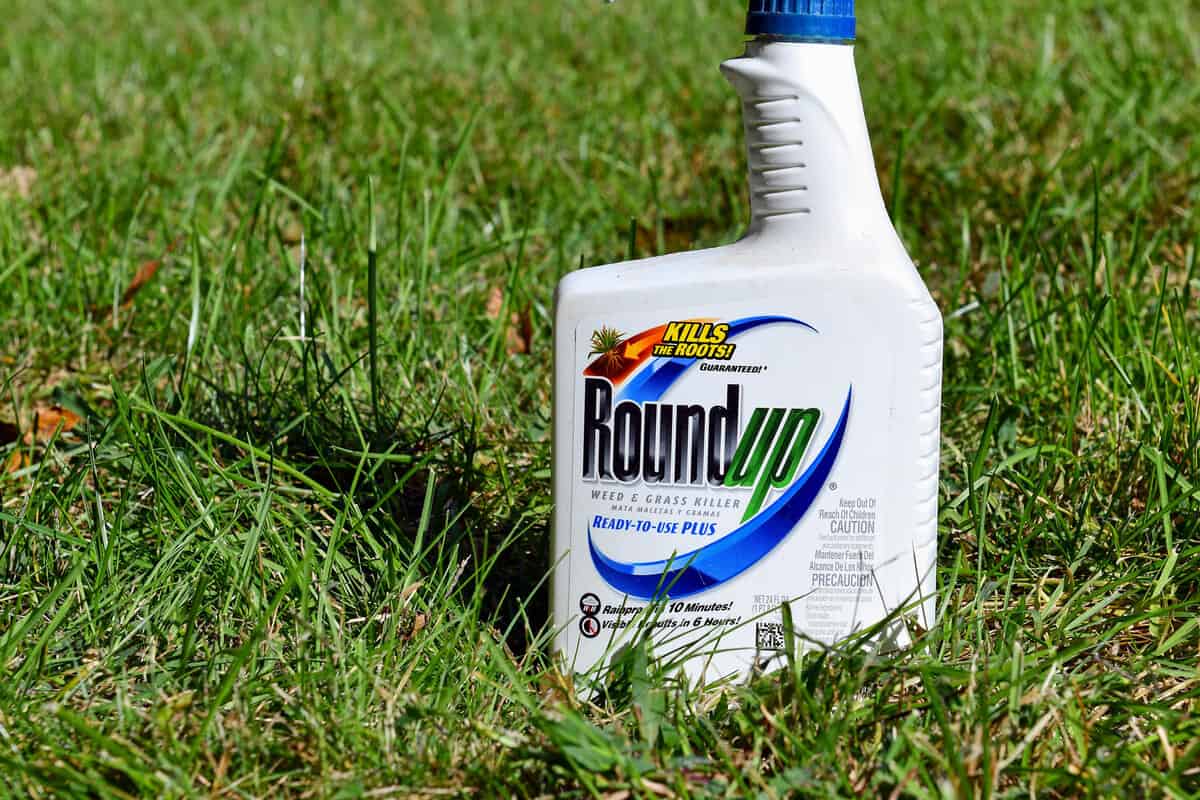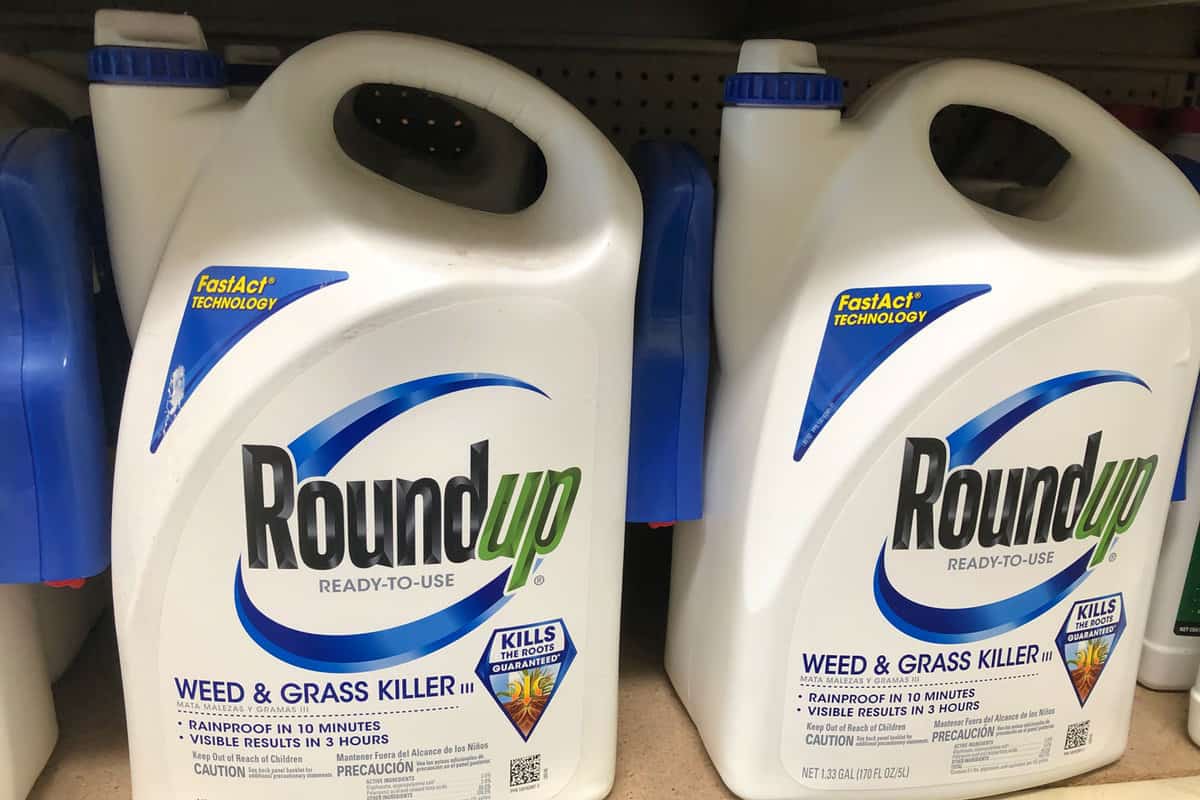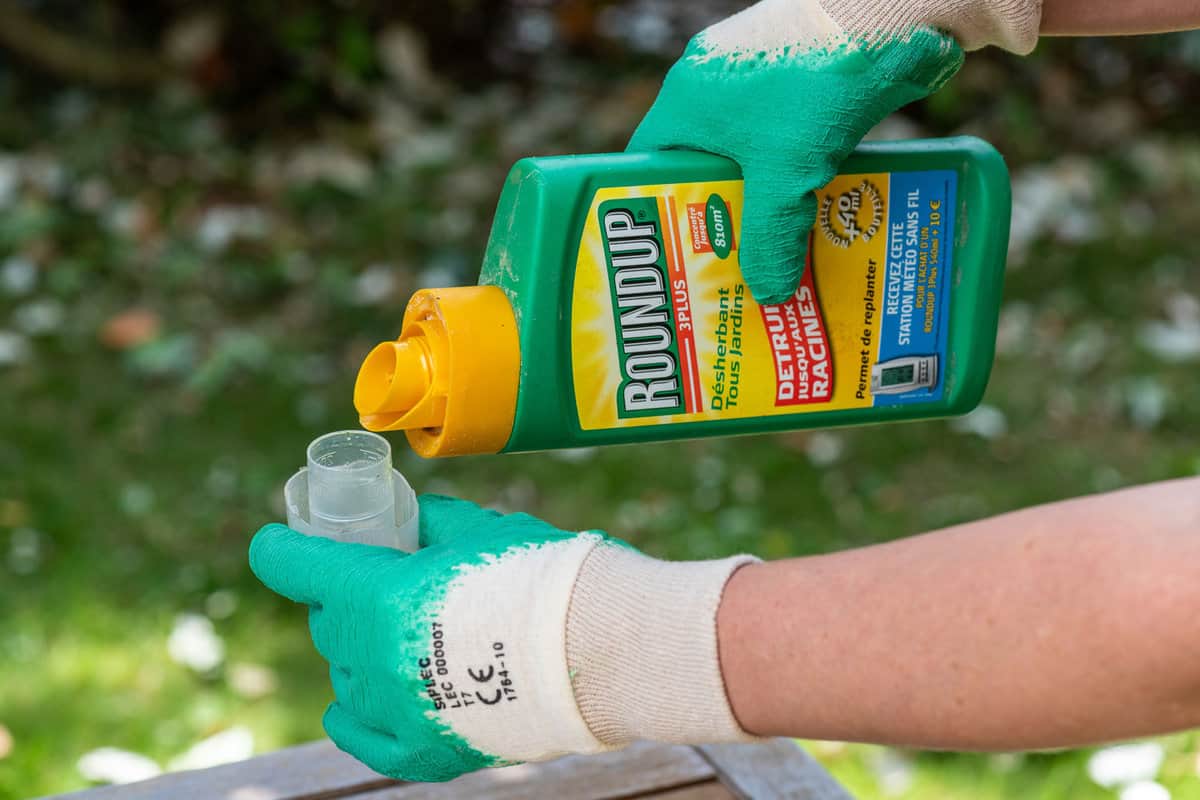There are several Roundup-ready crops, including alfalfa, soybeans, and corn, among others. Being genetically modified, they can resist Roundup herbicide. This means you can only use this herbicide, sometimes in combination with others, to control the weeds. If you are wondering when to spray your crops with this herbicide, we researched to bring you information on this and more.
The best time to spray Roundup herbicide on your Roundup-ready plants depends on the stage of growth of your crops, the height of the weeds, and the species.
Continue reading as we provide information on when to spray your Roundup crops with Roundup weed killer. Included are the pros and cons of the weed killer and its proper storage.
When Should You Spray Roundup Ready Alfalfa, Soybeans, and Corn?

Roundup-ready crops are genetically modified to make them resistant to the Roundup herbicide. Roundup is the brand name for glyphosate herbicide which works by hindering protein production in a plant needed for its growth.
It is considered a broad-spectrum product because it kills any plant with which it comes into contact.
This is why experts developed Roundup-ready crops that cannot be affected by Roundup herbicides. That way, the herbicide destroys the weeds and not your crops.
The most appropriate time for spraying glyphosate on crops is when the weeds reach a certain height. The growth stage of your crops also determines when you should spray. In some cases, you need to consider the species of the weeds you need to get rid of.
Below is a discussion of the most suitable time to spray Roundup alfalfa, soybean, and corn:
When To Spray Glyphosate On Roundup-Ready Alfalfa
When your Roundup-ready Alfalfa plant is 4 inches tall or between V3 and V5 growth stages, spray glyphosate when it's five days before harvest.
A timely application is necessary. Any delays may not be effective in controlling weed growth, especially during the establishment stage of the Alfalfa crop.
Alfalfa will grow slowly and can be adversely affected if it has to compete with weeds for nutrients. As a result, you will have a significantly reduced yield.
When To Spray Glyphosate On Roundup-Ready Soybeans
To control weeds when growing Roundup-ready soybeans, you may need to apply glyphosate as soon as the crop starts germinating.
You can grow soybeans on non-tillage land; a method farmers embrace since it is cost-saving. Further, no-till planting does not interfere with the yield. So, when planting, spray glyphosate when your crop is between 23 and 30 days old.
However, if there are weeds before you plant, spray a burndown herbicide before you plant soybeans.
When To Spray Glyphosate On Roundup-Ready Corn
If you grow Roundup-ready corn, you might notice weeds when your corn appears. The problem with this is that the corn and weeds compete for nitrogen in the soil, which stunts the growth of your corn.
According to Purdue University, the most notorious weeds that absorb nitrogen quickly include crabgrass, foxtail, and fall panicum.
Therefore, to control grass weeds, apply herbicides that contain atrazine before or just when you have planted corn as a way of stopping weed growth.
Afterward, apply Roundup herbicide or glyphosate when the weeds are 3-4 inches tall. Follow with a second application when the corn has eight collars or is 30 inches tall.
The Pros And Cons Of Glyphosate

As explained earlier, Glyphosate is a herbicide from the Roundup brand. Whereas it has benefits, it also has drawbacks. Let's check them out below:
Pros
The pros of this herbicide are:
Breaks Down Easily
Some herbicides can stay in the soil for years, subsequently affecting the health of any new crops planted.
In contrast, glyphosate starts to disintegrate into a non-toxic substance immediately after it enters the soil.
According to the Wisconsin Department of Natural Resources, it takes between 3 days and 19 weeks for glyphosate to break down to half its life.
Low Toxin Levels
The low toxin levels in glyphosate make it safer to use compared to other herbicides. It is safe for humans and other living organisms, such as fish.
As long as you follow the instructions on the label, it will not harm you.
Increased Crop Yield
Glyphosate kills weeds between 2 and 10 days. It is a cheaper and more effective method than manually removing weeds.
You have an added benefit if you grow Roundup-ready crops resistant to glyphosate. By carefully following the instructions on the label, you will harvest a higher yield.
Cons
The cons of this herbicide are:
Longer To Break Down
There are variations in how long glyphosate takes to break down.
As mentioned earlier, it can take up to 20 days for glyphosate to break down. Yet other studies show that it can take up to 140 days for this herbicide to break down to half its toxin levels.
Typically, the average breakdown to half-life is 47 days. The time it takes to disintegrate depends on several factors, such as climate and moisture level.
However, if glyphosate stays in the soil too long, it can harm any other crops you may grow long after the first application.
Harmful
Glyphosate can still be harmful if not handled well. Wear protective gear such as goggles, a face mask, and overalls when spraying. It can be a skin and eye irritant.
The chemicals this herbicide is mixed with can be toxic and harmful. Always read the label's instructions and warnings to avoid mixing incorrectly.
Kills All Plants
This herbicide kills all plants it comes into contact with, minus the Roundup-ready crops. If you spray on non-Roundup-ready crops, do so on a day when it is not windy. The wind can spread the herbicide to plants nearby, killing them.
How To Store Roundup Weed Killer

If stored well, you can use any leftover Roundup weed killer the following year. It is best to buy just what you need, but there is still a chance you will buy more than you need.
Because of this, it is good to know how to store it well to prevent degradation and other potential hazards.
Tips on how to properly store it include:
Store In A Safe Area
Store your herbicides in an area that cannot catch fire easily. Although glyphosate does not burn, it can be dissolved in a flammable substance. Also, store it far away from sources of water, such as wells, to prevent contamination of the water.
Keep Away From Children And Pets
Store your herbicide in locked storage away from children and pets. This prevents accidental spillage. Also, ensure the store is well-ventilated.
Leave Room For Expansion
Storing glyphosate during cold weather is beneficial because it will not degrade quickly. However, it can expand and rapture the container it is stored in. This can cause it to leak out into unwanted areas, contaminating what is around.
That is why you need to leave room in the container for expansion. In other words, don't fill it up to the brim.
Keep Away From Sunlight
Keep your herbicide away from sunlight as it may degrade, causing it to be ineffective. The safe temperature range for storage is 40-100 degrees Fahrenheit.
Avoid High Humidity Levels

To maintain the effectiveness of glyphosate, store it in areas where moisture levels are low. High humid levels can cause your dry formulation to clamp together or may dissolve in moisture, rendering it useless.
In Closing
Roundup-ready crops need Roundup weed killers. Besides, you must know when to apply or spray your Roundup-ready crops. In addition, the pros and cons of this herbicide and tips on how to store it properly were also discussed.

To read more about the Roundup weed killer, click on the links below:
How Long Roundup Works Before Rain
